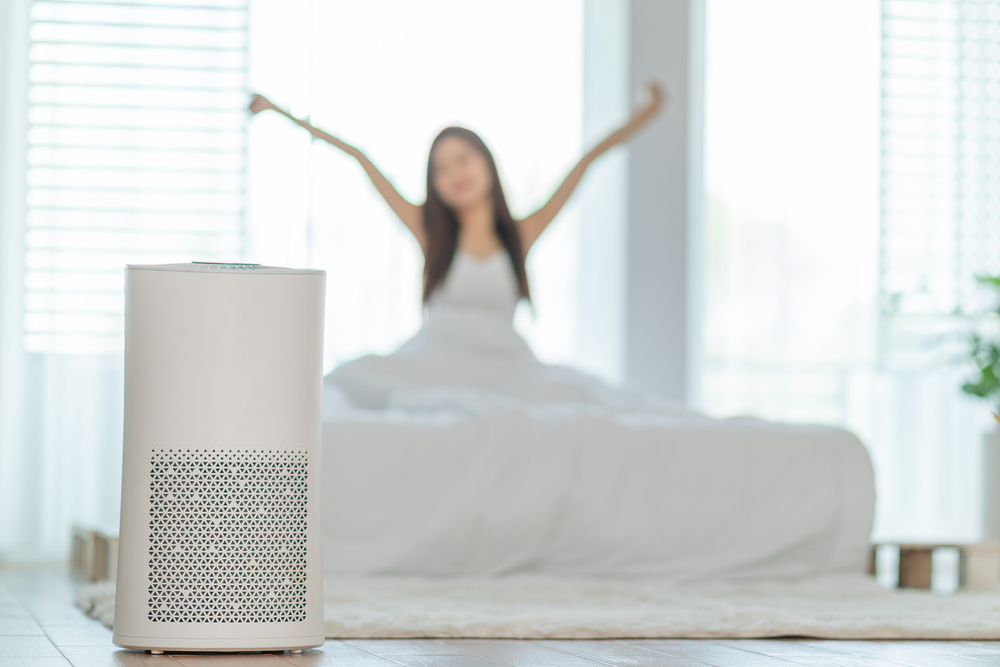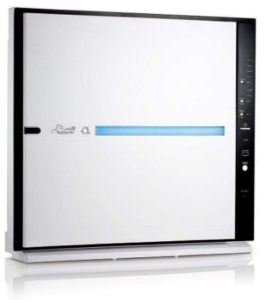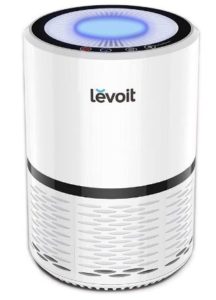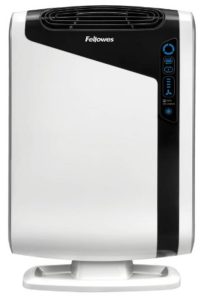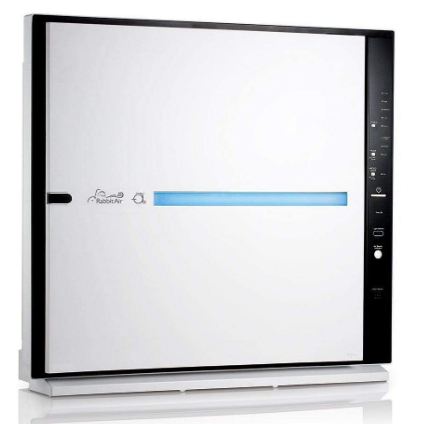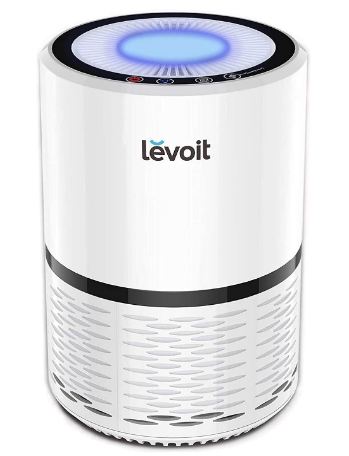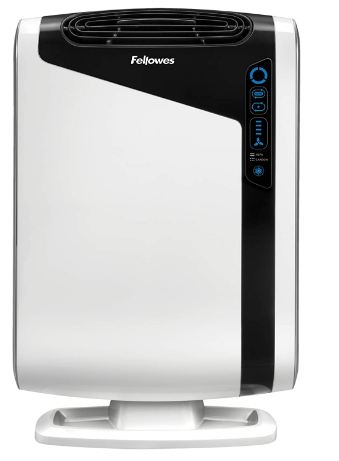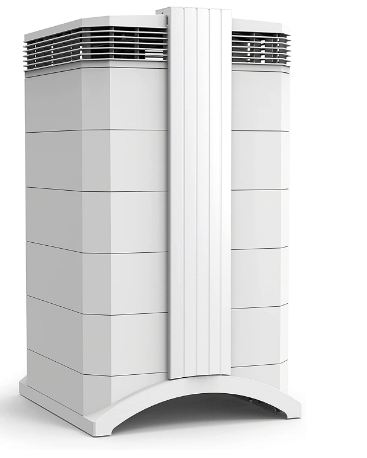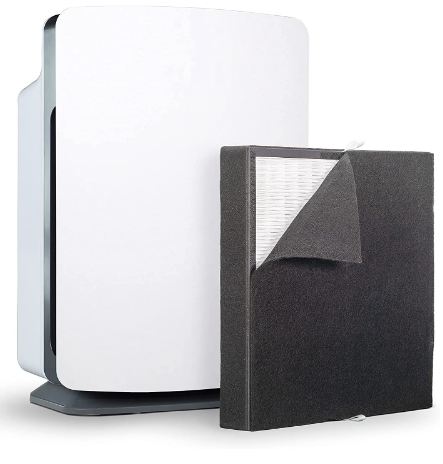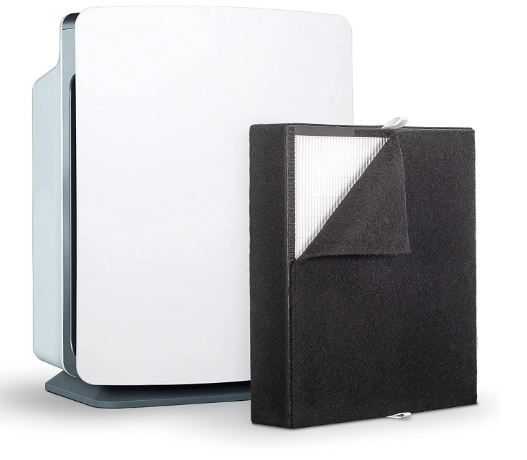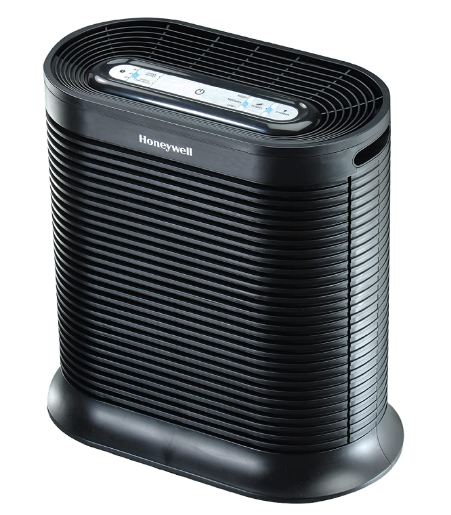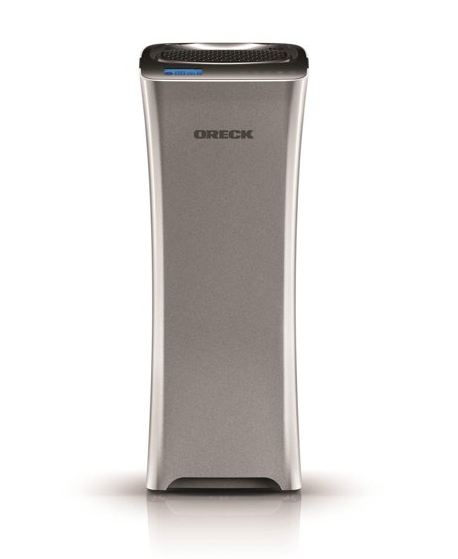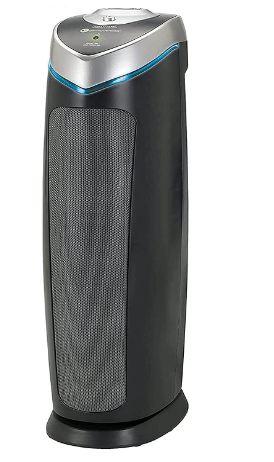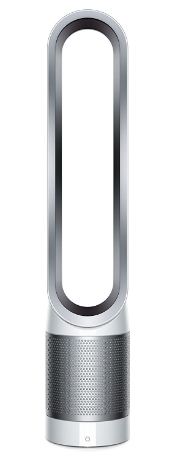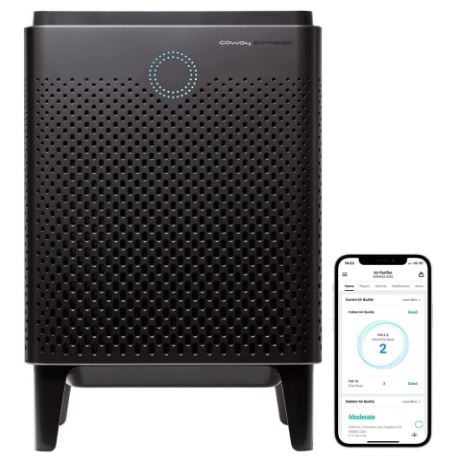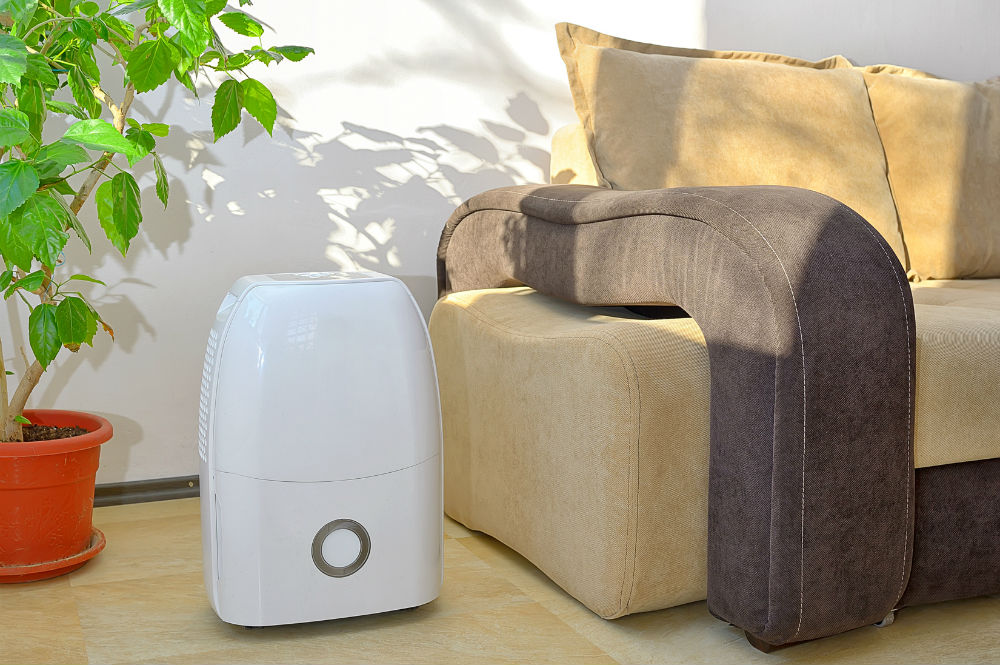Are you shopping for the best HEPA air purifier for your home or office?
You have come to the right spot.
Our Top 3 Picks
- It can cover 700 square feet of space with very little energy
- it has six stages of purification.
- This air purifier uses very little energy to keep your home healthy and clean.
- Compact size
- It can remove 99.97% of allergens and pollutants by using a 3-stage purification process.
- This purifier is great for allergy sufferers and nasal stuffiness.
- AeraMax 300 can remove 99.97% of allergens and pollutants from the air.
- AeraMax 300 has four stages of purification.
- It covers large rooms up to 600 feet.
Why use a HEPA air purifier?
Indoor air is not as clean and healthy as you may think.
The air inside your home can be several times more polluted than the outdoor air, despite being located in most major cities.
Allergy sufferers should be aware that the indoor concentrations of some allergens, such as pet dander or mites, can be up to 100 times higher than those found outdoors.
Your air can be contaminated by all sorts of pollutants, from obvious ones such as tobacco smoke to subtle ones such as furniture materials.
Experts consider indoor air pollution a serious health problem. It can irritate the eyes and throat and cause long-term issues such as cancer and other respiratory diseases.
High-quality air purifiers can remove harmful particles from indoor air.
This is why indoor air purifiers are a top recommendation by the EPA for improving indoor air quality.
NOTE: In hot and humid climates, a portable air conditioner may be a better option for some. Many portable air conditioners have a HEPA filter that traps pollen, mold, and other pollutants.
What’s in This Buying Guide
Table of Contents
This guide reviews and recommends the best HEPA purifiers sold in our opinion and provides advice to help you find the right unit for your needs and situation.
Below we recommend specific HEPA purifiers for different room sizes and medical conditions such as allergy relief, asthma relief, and other everyday situations.
What is a HEPA Air Purifier?
The best type of air filter is HEPA (high-efficiency particulate air filter). These filters can remove particles such as dust, pollen, smoke, and pet dander that have a diameter of less than 0.3 microns.
These tiny particles, although not visible, can easily enter your lungs and cause serious health problems.
HEPA filters are especially beneficial for people suffering from allergies or respiratory problems such as asthma due to their high efficiency.
On the other hand, HEPA filters do not remove gases including VOCs, chemical vapors, and odors. This is why HEPA purifiers often include activated carbon filters.
Medical Grade HEPA, True HEPA, and HEPA Type
There are three grades, or filtration levels, of HEPA filters sold today.
Medical-Grade HEPA
HEPA filter for medical use (or H13 HEPA) refers to the most powerful HEPA filters (H13 or H14). They can trap 99.95% to 99.995% ultra-tiny particles. On the other hand, H10 to H12 HEPA filters, which are lower in quality (H10 and H12), capture 85% to 99.5% of small airborne particles. Therefore, HEPA filters of medical grade are superior at cleaning indoor air.
True HEPA
These filters can trap 99.97% particles smaller than 0.3 microns.
HEPA Type/HEPA Similar
HEPA Type is a marketing term companies use to make you believe you are purchasing a HEPA purifier. These filters don’t have certification, so you won’t know how efficient they are. Although manufacturers may claim that the filter has a 99 percent efficiency or greater, it is impossible to know true.
The Bottom Line
When you’re looking for a HEPA air purifier, make sure to look for labels such as H13 HEPA, True HEPA, or HEPA. These filters are recommended by the EPA and other health organizations such as the CDC to improve indoor air quality.
MERV Rating
The MERV rating is a useful metric to compare HEPA air purifiers, too. However, not all manufacturers report it. The MERV rating shows the filter’s efficiency. Ratings range from 1-16. In addition, its MERV rating measures the purifier’s ability to capture airborne pollutants.
Best HEPA Air Purifiers
- 1. Best HEPA Air Purifier (Overall): Rabbit Air Minus A2
- 2. Best for Small Rooms: Levoit LVH132
- 3. Best for Large Rooms: AeraMax 300
- 4. Best for Asthma and Allergy Relief: IQAir HealthPro Plus
- 5. Best for Dusty Homes: Alen BreatheSmart
- 6. Best for Mold: Alen BreatheSmart FIT50
- 7. Best for Pets: Honeywell HPA300
- 8. Best Air Purifier + Humidifier: Oreck WK15500B Air Refresh 2-in-1
- 9. Best Budget Air Purifier: GermGuardian AC4825 3-in-1
- 10. Best WiFi Connected Air Purifier: Dyson Pure Cool Link
- 11. Best Whole-Home HEPA Air Purifier: Airmega 400S Smart
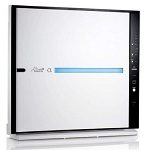
Rabbit Air MinusA2
Best HEPA Air Purifier (Overall)
Max. room size:
Up to 700 sq. ft.Suitable for:
Bedrooms Studies Kitchens
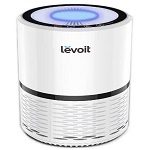
Levoit LV-H132
Best for a Small Room
Max. room size:
Up to 86-150 sq. ft.Suitable for:
Bedrooms Studies Living room Kitchen
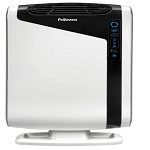
AeraMax 300
Best for a Large Room
Max. room size:
Up to 300-600 sq. ft.Suitable for:
Large rooms Large kitchens
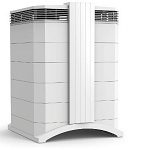
IQAir HealthPro Plus
Best for Allergies and Asthma Relief
Max. room size:
Up to 1,125 sq. ft.Suitable for:
Living rooms Larger rooms Offices Basements
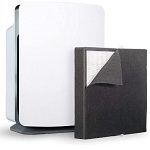
Alen Breathe Smart
Best for Dusty Homes
Max. room size:
Up to 1,100 sq. ft.Suitable for:
large living rooms Open floor plan living areas Bedroom Office combinations
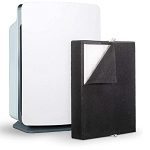
Alen Breathe FIT50
Best for Mold
Max. room size:
Up to 900 sq. ft.Suitable for:
Living rooms Open floor planes

Honeywell HPA300
Best for Pets
Max. room size:
Up to 465 sq. ft.Suitable for:
Mid-size living rooms Normal sized bedrooms
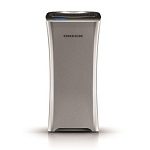
Oreck WK15500B
Best Air Purifier + Humidifier
Max. room size:
Up to 115 sq. Ft.Suitable for:
bedrooms, dens, or nurseries

GermGuardian AC4825
Best Budget Air Purifier
Max. room size:
Up to 167 sq. ft.Suitable for:
Den bedroom Baby nursery Home office
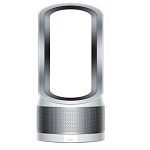
Dyson Pure
Best Wi-Fi Connected Air Purifier
Max. room size:
Up to 1,000 sq. ft.Suitable for:
Large living rooms
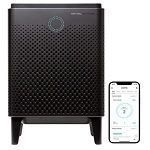
Airmega 400S
Best Full-Home HEPA Air Purifier
Max. room size:
Up to 1,560 sq. ft.Suitable for:
Large living rooms
The Rabbit Air Minus A2 is an excellent air purifier. You can be sure that your indoor air is healthy and clean with six stages of purification.
You can use it to cover 700 square feet of space with very little energy.
It is also extremely quiet and valuable for your bedroom.
Air Purification
The Rabbit Air Minus A2 HEPA air purifier is the most efficient. It can trap pollutants as small as 0.33 microns and has a 99.97% efficiency.
It captures all sizes and types of particles, including mold, pollen, pet hair, soot, and dust.
This air purifier is so efficient because it has six stages of purification.
- Pre-filter – Large particles of dust or other allergens are captured.
- Medium filter – The purifier targets particles larger than 1 micron, including pet dander and pollen.
- BioGS HEPA Filter-This filter traps small allergens and pollutants up to 0.3 microns.
- Custom Filter – You can customize your filter to meet your air purification requirements; e.g., you can purchase it for pets with allergies, germ defense, and odor elimination.
- Activated Carbon Filter – This filter reduces chemical odors and unpleasant odors.
- Negative Ion Generator – This helps purify indoor air and offers other health benefits.
Room Coverage
The Rabbit Air MinusA2 covers up to 700 square feet area and will make two air exchanges per hour in a room that size – or four air exchanges per hour in a 350-square-foot room.
Other Features
The Rabbit Air MinusA2 can work as an air purifier that is either standalone or wall-mounted.
You can hang it on a wall by choosing one of the custom panels Rabbit Air has created in collaboration with artists.
The LED light on the panel produces soothing colors and a relaxing effect. This panel is ideal for relaxing after a long day.
This air purifier has been Energy Star certified. The air purifier uses very little energy to keep your home healthy and clean.
Even at the highest settings, it runs very quietly. It’s almost impossible to hear at the lowest setting. The purifier has a light sensor that detects darkness and automatically switches to night mode.
The Rabbit Air MinusA2 is great for bedrooms thanks to its night mode and whisper-operation features. In addition, it runs all night without disrupting your sleep.https://machinewonders.com/rabbit-air-minus-a2-hepa-air-purifier-review/
The compact size of this air purifier can be placed on your bedside table and still keep out dust, mold, and other pollutants.
It freshens the air and removes odors quickly in a small room.
The Levoit LVH132 compact air purifier is the perfect choice if you need a smaller to mid-sized room.
It is ideal for use in your bedroom, living area, kitchen, or study and is easy to carry to work.
It also runs quietly so that you don’t have any concerns about disturbing your coworkers.
Its cylindrical shape is very stylish. It will look great wherever you place it.
Air Purification
Although the Levoit LVH132 covers only 86 square feet, some customers claim it can cover larger rooms up to 150 square feet.
It can remove 99.97% of allergens and pollutants by using a 3-stage purification process.
Pre-filter – This stage captures larger particles such as dust, fungi, and allergens.
True HEPA filter– traps pollen and dust mites.
Activated carbon filter – removes odors from the air. For example, it removes household odors caused by pets, cooking, and smoking.
This purifier is great for allergy sufferers and nasal stuffiness. Place it in the room you spend most of your day, and it will make you feel better. Also, if you have a family member with a sensitive nose, it can help.
Room Coverage
The Levoit LVH132 is perfect for smaller rooms measuring between 86 and 150 square feet.
The purifier will become less efficient if the room is larger than the maximum recommended 86 square feet.
If you require a high-level purification, make sure to use it in the recommended size room.
Other Features
Three fan speeds of the purifier are adjustable to let the air flow through it.
The purifier works quietly at any speed. This is particularly useful at night. Place it right next to your bed so you can still get a peaceful night’s sleep. You can relax with the soft nightlight on top.
The purifier is free of ozone. Ozone can cause asthma flare-ups and other respiratory issues.
The AeraMax 300 purifier is ideal for large rooms (300-600 square feet). The AeraMax 300 is robust and highly effective at purifying indoor air. It’s also great for people with allergies or asthma.
Air Purification
The AeraMax 300 can remove 99.97% of allergens and pollutants from the air. It can capture particles as small and as small as 0.3 microns, including dust, smoke, pet dander, and mold. It can also reduce household odors.
The AeraMax 300 has four stages of purification.
Carbon filter – traps large particles and eliminates odors in the home.
True HEPA filter – Removes all airborne particles, even the smallest ones like viruses and mold spores.
AeraSafe antimicrobial treatment– This feature extends and protects True HEPA filters by keeping away odor-causing bacteria and fungi.
Plasma true technology – Uses ionization for indoor air pollution and allergens.
Air purifiers that use ionization may produce ozone. This is a dangerous and toxic gas. The AeraMax Purifier emits less ozone than the maximum recommended exposure.
AeraMax 300, along with other AeraMax models, are also California Certified Air Cleaning Devices. Again, this is a low-risk purifier unless your doctor tells you otherwise.
If you are concerned about the ozone, there’s a button that can turn off ionization.
Room Coverage
The AeraMax 300 covers large rooms up to 600 feet. You should not use the AeraMax 300 in any room that is smaller than the recommended size. It can cause dangerously high levels of ozone and ionization.
Other Features
The AeraMax features a high-performance mode you can activate during flu season. As a result, it is more efficient to capture the influenza virus indoors and keep your family healthy.
It is great for people with asthma or allergies. The Asthma and Allergy Foundation of America has certified it as asthma- and allergy-friendly.
IQAir HealthPro is an air purifier that can help you with asthma and allergies.
Perhaps you’ve read about it in a book or received a recommendation from a friend.
The good news you have heard about this unit is accurate. This unit is the ideal purifier for asthma and allergies.
Air Purification
All the purifiers in this buying guide can filter particles up to 0.3 microns. However, the IQAir HealthPro can capture particles as small as 0.003 microns.
It’s a small amount, and it makes sure there’s nothing in the air that could affect your health.
The HelathPro utilizes a HyperHEPA filter that is many times more efficient than traditional HEPA filters. It can remove 99.5% of particles from the air.
The HealthPro almost eliminates allergies, stuffy noses, smell sensitivities, and other asthma-related issues.
The filters last longer than other purifiers despite their high performance.
To purify the air, it uses three filters:
The primary HyperHEPA filter to remove ultrafine particles
The PreMax filter is for pre-filtering larger particles
The optional V5 filter can absorb odors.
An LED display shows you how many hours each filter has left so that you can know when it needs replacement. In addition, the indicator lights are color-coded to indicate which filter needs replacement.
Room Coverage
The HealthPro purifier covers rooms up to 1,125 square feet.
This is the best air purifier for large rooms.
It is a great choice in living rooms, large offices, basements, and other areas where you spend a lot.
Other Features
You might expect a loud machine due to its size, extra-fine filtering, and power.
The HealthPro is relatively quiet. It is useful for your bedroom, without being disturbed by a fan.
The manufacturer describes it as an EvenFlow Diffuser, which produces clean air at a 320-degree angle in multiple directions. This is one reason the unit operates whisper quietly and reduces the noise when the air leaves the unit.
It consumes very little power and is comparable to a single lightbulb. It is possible because of the innovative fan design and motor that produces high airflow with minimal power.
The downside?
The HealthPro is expensive.
But its $800 price is reasonable considering how clean it can purify the air.
The Alen BreatheSmart purifier will clean your air in as little as 2 hours, even in rooms up to 1,100 square feet.
You can choose from 14 colors, including blue, white, oak, green, and bronze. It will look great wherever you place it.
Air Purification
Alen BreatheSmart is suitable for rooms up to 1,100 square feet, such as large living spaces, open-plan living areas, bedroom, office combinations, and large living rooms.
The air purifier has a sensor that continuously monitors the air quality and adjusts its performance accordingly to maximize efficiency and save energy.
An LED light will tell you how dirty your indoor air is. Higher levels of pollutants mean that it is challenging for purifiers to clean indoor air.
Turbo Mode is activated when pollutants are at their highest concentration.
BreathSmart’s air purifier is very quiet. The noise level at the highest setting is only 56 dB. This is quieter than background music or everyday conversation.
The noise level at its lowest speed is 41.5 dB, which is about the same as a library.
Room Coverage
Alen BreatheSmart purifies rooms up to 1,100 square feet in size. This provides greater coverage than other air purifiers. However, even the most powerful can’t handle rooms or apartments larger than 900 feet.
This unit is ideal for open-plan rooms that span multiple spaces, such as the living and kitchen areas.
Other Features
Alen BreatheSmart produces pink noise. However, it is more relaxing and can be used to counter high-frequency sounds.
Your central air system might not be able to handle dusty areas. Alen BreatheSmart is a cheaper and better alternative to expensive air conditioners. It can be moved from one room to another, uses less power, and purifies the air more effectively than central ACs.
This air purifier is similar to the Alen BreatheSmart but is smaller and more space-efficient. It is precisely for mold removal.
A FIT50 set is worth purchasing for specific problems such as pets, wildfire smoke, and household odors.
The Alen BreatheSmart 50 purifier comes in 14 color options, just like the original Alen BreatheSmart.
Air Purification
The FIT50 utilizes a HEPA Silver Filter to target mold, bacteria, and allergens. It is helpful for people with asthma or allergies.
The purifier has an automatic sensor that detects the air quality and adjusts its performance. In addition, the control panel has an LED light that shows how hard the purifier works and the current indoor air quality.
Room Coverage
The Alen BreatheSmart FIT50 is for rooms up to 900 square feet. The machine does two air changes per hour if the area is smaller than 900 square feet. 1 ft.
Other Features
The FIT50, like its sibling model, uses WhisperMax technology to reduce noises. The FIT50 also emits pink noise, which is great for relaxing at night.
The FIT50 is also Energy Star certified.
This air purifier is designed to make living with a pet easier on people who suffer from allergies and respiratory issues.
Although this Honeywell allergen remover does not cover as large a room area as other purifiers, it does a great job removing pet allergens.
The HPA300 circulates air five times per hour in a room.
It quickly eliminates pet fur and dander in a fast air cycle and prevents it from settling on furniture or getting into your lungs.
Air Purification
Honeywell’s allergen remover offers four cleaning modes, as follows:
- General Cleaning
- Allergen Removal
- Germ Removal
- Turbo Mode
The control panel allows you to select the mode that interests you.
This purifier’s True HEPA filter captures allergen particles down to 0.3 microns, such as pollen, mold and pet hair, and smoke particles.
It also features a carbon prefilter that traps larger particles, absorbs gases and odors.
Room Coverage
Honeywell HPA300 allergen removal product works best in rooms larger than 465 square feet. This includes normal-sized bedrooms and mid-sized living rooms.
Other Features
Easy-to-maintain filters are there in the purifier. The pre-filter should be changed every 3 months, while the main HEPA filter needs replacement once per year.
The HPA300 purifier is Energy Star certified, so you won’t have to worry about your power bill.
Health problems are not limited to allergens.
Dry air can also be a problem. Dry air can aggravate many conditions such as asthma, allergies, sinusitis, and bronchitis.
It can also irritate the nasal cavity, make your eyes itchy, and may even lead to a hoarse throat and nosebleeds.
These concerns can be addressed by the Orek WK15500B, which can purify and humidify indoor air in one unit.
Air Purification
There are two stages to purify the air. First, the purifier has a HEPA filter, which captures more than 99% of allergens in the air, and a charcoal filter to remove odors. The HEPA filter can catch dust, smoke, pollen, dust mites, mold, and pet dander.
Ultrasonic humidifier
Ultrasonic humidifiers add moisture to the air without heating. If children or pets are present, this is safer than heating the air with heaters.
You can adjust the humidity level to suit your comfort preferences.
A sensor detects humidity levels in the room and switches the humidifier on/off automatically.
You can either turn the purifier or the humidifier on at the same time.
Room Coverage
The Oreck WK15500B air refresh is suitable for small rooms up to 115 square feet. It is ideal for small bedrooms, a nursery, or studies.
Other Features
The unit is quiet even when both functions are running. It can be used in your bedroom or nursery comfortably without any disturbances.
An LED display is located on the front of the filter. It shows the settings and the remaining life. When one of the filters needs to be replaced, you will receive a notification.
Air purifiers can be purchased for between $200 and $600. Some models are more powerful and have special functions, while others can be as high as $800.
You don’t have to spend a lot to buy a high-quality air purifier.
For example, the GermGuardian AC4825 costs less than $100 but can clean medium-sized rooms with enough power.
Air Purification
GermGuardian AC4825 purifies indoor air using a 3-in-1 process.
This unit has a HEPA filter that captures 99.97% allergens and pollutants down to 0.3 microns.
To kill germs, it uses UV-C light.
It also uses a charcoal filter for common household odors.
You have the option to choose between 3 speeds, depending on your preference for comfort.
This is a lot of functionality for $100.
Room Coverage
GermGuardian AC4825 air purifier is suitable for rooms smaller than 153 square feet. This air purifier is also great for small homes.
Other Features
Several customers have said that this air purifier is not the quietest.
It makes quite a bit of noise at its highest speed setting. It is often described as white noise. You can adjust the volume to make it less noisy.
Additional features include a filter indicator and the ability to turn on or off the UV-C light.
This purifier is a great value for money and has very few drawbacks. However, if you have ample space or need to clean the house, this purifier is not for you.
The Dyson Pure Cool Link air purifier is unique. It is futuristic in design.
WiFi connectivity is another unique feature. The unit can be connected to your WiFi network and controlled from your smartphone.
It can also be used with Amazon Alexa to produce air quality reports.
Air Purification
The Dyson Purecool Link can be used as both an air purifier and a powerful cooling fan.
It uses a 360-degree glass HEPA filter to remove particles as small as 0.03 microns. It also contains activated carbon granules that absorb odors as well as VOCs.
The companion app allows you to monitor indoor air quality from wherever you are.
The Dyson air purifier is smart, too: It automatically detects the air quality and adjusts its purification performance accordingly.
Room Coverage
The purifier can be used in medium- and large-sized rooms, up to approximately 1,000 square feet.
It utilizes Air Multiplier technology to ensure that purified air circulates as wide as possible within a space.
Other Features
This air purifier has two of the most innovative features to come along in a while, WiFi connectivity and Alexa compatibility.
We also love the night mode, which switches between the quietest settings and dims the LED lights.
You can choose from ten speeds (most purifiers have three), and it will automatically shut off when it is tipped over
To get the most out of your Dyson air purifier, make sure to download the Dyson App.
You need to purify the air in large rooms (over 500 sq. Unfortunately, most air purifiers cannot purify the air in large rooms (over 500 sq. ft.) and multiple locations.
You will need a portable, powerful air purifier that has high airflow.
The Airmega 400S smart purifier is recommended for whole-home use.
This unit can be rated for an area of up to 1,560 square feet 1200 sq. ft. It can be used in one large space or to purify the entire house.
It is essential to keep it centrally located and to leave all doors open to other rooms.
It will cost you around $750 to get all the power, but it is worth it if your space requires a powerful air purifier.
Air Purification
The Airmega 400S begins by sucking in lots of air to ensure it covers a large area.
The 400S is more efficient than most portable HEPA air purifiers, which only have one inlet. This allows it to clean more air in a shorter time.
The powerful fans push the purified air out of the top. This allows the air to spread throughout the room quickly.
The 400S has a triple-filtration system to clean the air.
* Pre-filter – This is a mesh filter that captures large particles such as pet hair and fur. This improves air purification, reduces the load on the HEPA filter, and prolongs its life.
* Max2 filter – This filter has two layers: a HEPA filter that captures dust particles as small as 0.3 microns and an activated carbon filter that eliminates odors and VOCs.
The 400S will show the remaining life of each filter to ensure that you have proper air purification. In addition, an indicator will let you know when the pre-filter needs washing and the Max2 filter needs replacement.
Room Coverage
The Airmega 400S can efficiently purify the air in an area up to 1,560 sq. 1 ft.
There are two air exchanges per hour. So if you have it in a smaller area, it will make more. If you place it in an area larger than the maximum recommended, your purification efficiency will decrease.
Other Features
The 400S can be connected to WiFi and controlled remotely via an app.
You can control various settings and features from wherever you are. For example, you can adjust the fan speed, change modes, and set a schedule. You can also receive real-time reports on air quality to the app.
An Amazon Echo smart speaker can control the purifier when you connect it to Alexa.
There are two modes available for the 400S.
Smart mode automatically controls several settings, including night mode (using an integrated light sensor) or eco mode (using an integrated pollutant sensor).
You can also change the fan speed manually.
The LED air quality indicator is another cool feature. It can be found at the front of your air purifier. The color of the air will determine how clean or dirty it is. This app is fast and easy to use to evaluate indoor air quality.
10 Most Prevalent Air Pollutants in Your House
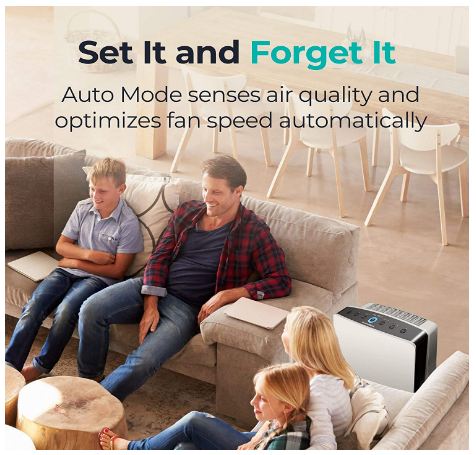
Buring Solid Fuels
The WHO states that particles from burning solid fuels like coal and firewood are among the most dangerous indoor air pollutants.
Soot and smoke can lead to various health issues, including cancer, heart disease, asthma, and heart disease.
The use of solid fuels in cooking and heating a fireplace has declined in the United States. However, you should be extra cautious if you still use wood or coal to light your fireplace. Women and children are at the greatest risk.
Carbon Monoxide
This dangerous gas can kill and is extremely dangerous. Solid fuel burning stoves, fireplaces, gas generators and heaters often emit carbon monoxide.
NOTE: Carbon monoxide cannot be eliminated by an air purifier.
Tobacco Smoke
Smoking in the home is a health risk for everyone. Smoking increases your risk of developing cancer, asthma, and TB, among other diseases.
Sometimes smoke from another apartment or house can make its way into your home. If this is your situation, an purifier is a good solution.
VOCs
There are many sources of volatile organic compounds (VOCs), including paints, furniture, and cleaning supplies.
According to the EPA, VOCs can cause health problems such as irritation of the throat, nose, and eyes, nausea, kidney damage, and cancer.
VOCs can be removed using the right kind of air purifier. The EPA recommends proper ventilation and using products according to the manufacturer’s instructions.
Mold
Mold spores are the reproductive bits of mold organisms. They can be as small as 3 microns and can remain suspended in the air for long periods of time.
Mold spores can be harmful, but only if they land on a surface conducive to mold growth, such as a damp, dark corner.
Mold spores can also cause respiratory problems, as well as allergic reactions if inhaled.
Most air purifiers are capable of capturing mold spores and reducing their levels in the atmosphere.
Dust
Indoor dust isn’t the same as outdoor dust.
Instead, indoor dust is a mixture of pollen, pollen, pet hair, dead skin cells, and soot.
People with allergies and respiratory problems are particularly vulnerable to these particulates.
Household dust particles can be captured by most air purifiers to help you control you allergies – especially in the winter.
Household Odors
Household odors don’t always refer to unpleasant smells like dampness or pet litter.
People who are sensitive to smell can also be affected by common smells of cooking, too.
Air purifiers with activated carbon filters can remove most household odors, leaving the air fresh and odorless.
Frequently Asked Questions
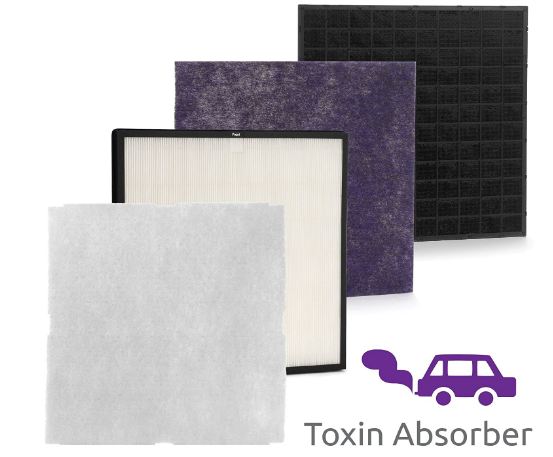
What is inside a HEPA Air Purifier?
HEPA filters are the main components of a HEPA air purifier.
High-Efficiency Particulate Air (HEPA) filters are mechanically driven (using a fan) air through the filter.
This filter can capture 99.97% particulates greater than 0.3 microns. Thus, this filter is 300 times smaller than an average human hair’s width (100 microns).
They can also capture any particle in the air, from bacteria to pollen and mold spores. This is why they are so efficient at cleaning indoor air.
Air purifiers don’t just use HEPA filters. A pre-filter is another filter that they use. It is made of activated carbon. It removes household odors and pre-filters larger particles.
Some purifiers also include Ozone or UV purifiers in addition to the main HEPA filter. A 3-stage purifier or 6-stage purifier simply means it uses three or six different methods to purify the air.
The purifier’s efficiency is determined by how much air it can filter in a given time. For example, it filters out more air than one with fewer air exchanges over the same time.
What Size of HEPA Air Purifier Do I Need?
It is important to choose a HEPA purifier that provides adequate air exchanges (at minimum 3) per hour to maintain clean air in the room. In addition, it is essential to consider the size of your room.
Manufacturers often indicate the recommended room size on purifier labels. This can be square footage or other general terms such as small, medium, or large.
Based on the size of your room, there are three types of air purifiers: Smaller ones for spaces less than 150 sq. ft. Larger ones for rooms between 170-400 sq. ft. and larger ones for larger rooms over 500 sq. ft.
You can also find powerful air purifiers for areas larger than 1,000 square feet.
Find out the room that you will be using the purifier in, and then choose an air purifier that can handle that room. You must include all open areas in your measurements if you have an open-plan home.
How Long Does a HEPA Air Filter Last?
Typically, a HEPA air filter will last one year or less.
Air purifiers may have indicators that show how long the filter has been in use and notify you when it is time to replace it.
If you don’t use your air purifier frequently, this period can be extended. Likewise, if your indoor air is more polluted than usual, it may be shorter.
HEPA filters are more effective at cleaning the air than clogging with particles. This prolongs the filter’s life expectancy.
The filter’s performance will decrease over time as more air passes through it. Therefore, you must replace your HEPA filter as f
HEPA Filters: Pros and Cons

Pros
It is highly efficient in filtering out airborne contaminants.
HEPA filters are great for asthmatics and people with allergies. They remove allergens from the indoor air better than any other type of filter.
HEPA filters are long-lasting – the average lifespan of air purifiers is about one year.
This is a great option for areas subject to high pollution levels, such as those affected by wildfires.
Cons
HEPA filters don’t filter chemical vapors or volatile organic compounds, nor any other gaseous pollutants. So, you should choose an air purifier with an activated carbon filter and a HEPA filter.
A HEPA air purifier needs to push more air through the filter as it is densely made. As a result, they can be loud, especially when you turn the fan up to the highest setting.
HEPA filters are not washable. It is not washable once it becomes clogged.
HEPA Air Purifier Buying Guide

These are the factors to consider when choosing a HEPA air purifier.
Room Size
A purifier should have the same recommended coverage area as the largest room to use it in.
Avoid using a purifier in a large space. This will waste energy and cause too much noise. You should not place a purifier in a smaller room. The purifier will not clean the air well, and it will last less time because it works harder.
Air Exchanges Per Hour (ACH): A Good Indicator of Air Purifier Efficiency
A purifier will clean the air cleaner the more it can exchange air per hour. The amount of air determines the air exchange rate that the fan can blow through the filter, usually measured in CFM (cubic feet per minute) or the area.
The ideal ACH ranges between 4 and 6.
This is why you should use your air purifier in the recommended size room. If the room is too large, a small purifier will not exchange as many air particles. As a result, indoor air will become dirtier.
Air purifiers come with fan speeds to adjust the CFM or airflow rate. For example, if you wish to save energy, you can lower the fan speed to make it quieter.
Air purifiers can be equipped with sensors to detect the air quality and adjust the fan speed accordingly. They perform more air exchanges if they detect larger particles and less if the air is clean.
Price: How Much Does a HEPA Air Purifier Cost?
Many good-quality air purifiers are less than $150 if you have a tight budget. These purifiers include desktop and small-sized air purifiers and purifiers for smaller and larger rooms.
Air purifiers typically cost between $200 and $350. However, you can find purifiers that fit rooms up to $900 square footage.
You can find purifiers that are high-performing and affordable in the $400+ range. In addition, they have multiple purifying technologies, humidifiers, and the ability to purify larger rooms than 1,000 square feet.
Filter Replacements
You should consider how often you need to replace filters, whether they are replaceable by someone else or how expensive replacements will cost. You should also check if multiple filters require replacement. There are two types of filters: the pre-filter and the filter. Some models have three, while others may only have two.
Energy Usage
Air purifiers work continuously throughout the day, night, and every hour of the day. Therefore, it is essential to choose one that is efficient in terms of energy.
An Energy Star-certified air purifier is one to look for. Energy Star purifiers use around 225 kWh annually. This is 40% less than the typical purifier, which operates around 550 kWh per year.
Noise Level
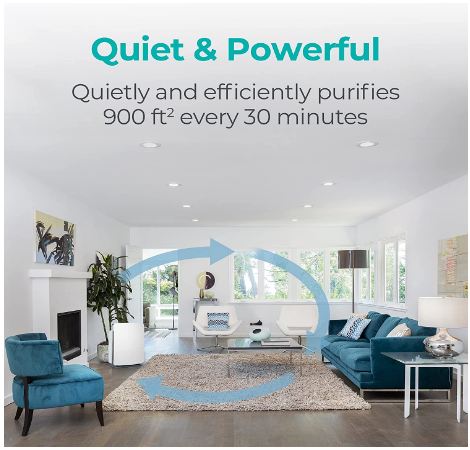
You want an air purifier that is quiet even at its highest setting. You should limit the volume to 50-60 decibels, especially in your bedroom or nursery.
Clean Air Delivery Rate (CADR)
CADR numbers may be something you have come across when looking into air purifiers. It simply measures the amount of clean air that an air purifier produces.
This is a great way to compare various models of air purifiers to give you a better idea of the purifier’s efficiency.
Although purifiers may have a high ACH and CFM, not all filtered air is going through them. Therefore, it is better to know how much clean air it releases back into the room.
One air purifier might have different CADR numbers for various particulates. One for smoke, one for dust, and another for pollen.
Ozone Emission
There are concerns about purifiers that use oxygen for purification. People prefer to use ozone-free purifiers.
You can also get an ozone-free model if you are concerned about your exposure to ozone. If the model is not on California’s approved list of ozone-generating cleaners, you should check. Follow the manufacturer’s instructions when setting up the purifier and how to use it.
Extra Features
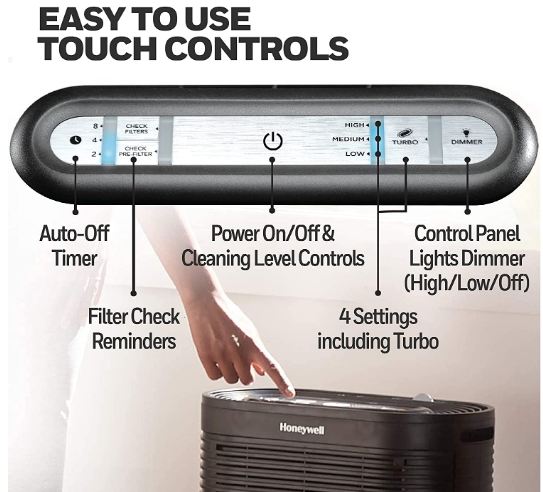
A built-in humidifier and air quality detector are some of the extras that make this a worthwhile investment. It is great to have an air purifier that can be connected wirelessly, but it is not something you should spend extra on, especially if your budget is tight.
You should also consider night mode, relaxation sound and lights, LCD, and front panels that are decor-friendly.
Reputation of the Manufacturer
If possible, choose a unit made by a trusted manufacturer. You can read customer reviews to find out what they say about the product and customer service.
Warranty
The warranty typically lasts between one and three years, but some warranties are extendable for five years. Check to make sure that the warranty covers all components.
Summary
A HEPA air purifier is one of the best investments you can make for your health and your family. It can be crucial to ensure the health of anyone living in your home who has allergies or other respiratory problems.
I hope you found this guide helpful in finding the right air purifier for you.
If you have any questions, leave a comment or send me a message via our Contact Page.
HEPA Air Purifiers: FAQs
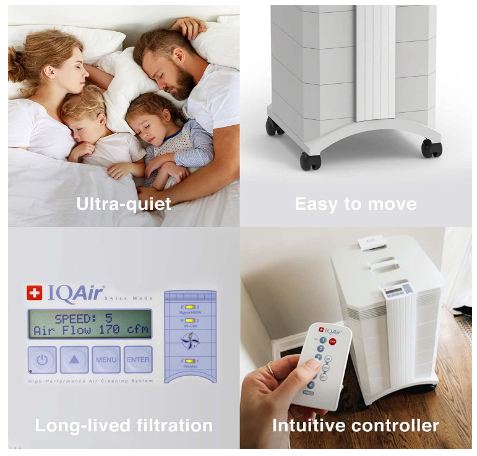
Are HEPA air purifiers able to help COVID-19?
Contrary to popular belief, HEPA air purifiers can capture smaller particles than the typical 0.3 microns. Thanks to a scientific principle called the Brownian movement, they are more effective at capturing particles smaller than 0.3 microns.
A virus measuring 0.125 microns causes Covid-19. A HEPA air purifier would easily capture the viruses. Likewise, UVC (ultraviolet technology) air purifiers will kill and capture the viruses.
A HEPA air purifier does not protect you entirely from COVID-19. There is a possibility that viruses may be transmitted from infected people to your filter before they reach you.
HEPA air purifiers can reduce COVID-19 virus concentrations in the air, which is something the CDC admits. However, it doesn’t guarantee that no exposure will occur. Other protective measures, such as social distancing and masks, are also necessary.
Are HEPA air purifiers worth the investment?
A HEPA air purifier will remove as many pollutants as possible.
It is particularly beneficial for allergy and asthma sufferers.
You don’t need to eliminate foul odors from your home if you are looking for a cheaper unit with both an activated carbon filter and a basic filter.
How long can HEPA filters last?
It should last approximately one year. If you only use your air purifier occasionally, it may stay for longer. However, you may see a shorter lifespan if you expose the purifier to higher pollution levels than usual, such as wildfire season.
Can I wash a HEPA Filter?
Most HEPA filters are not washable, but you can wash the pre-filter. You must replace the HEPA or activated carbon filters after a specific time.
I’m a degreed ME (mechanical engineer) who is passionate about machines of all kinds. I created MachineWonders.com as a way to connect with others who love machines like me – or need help choosing one for their needs, application, or situation.

